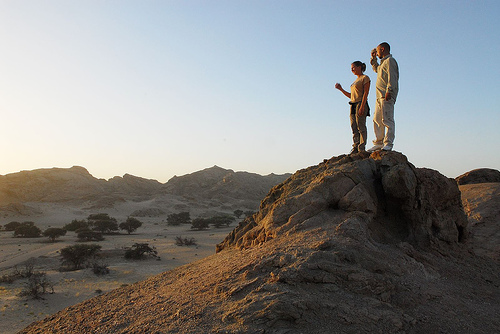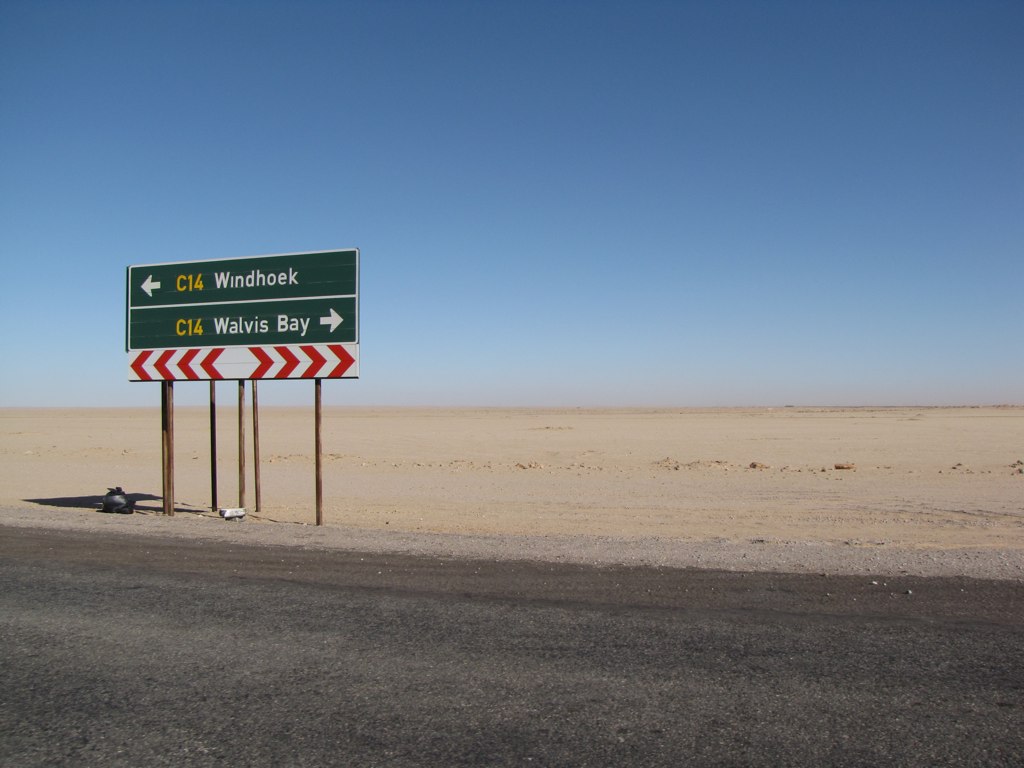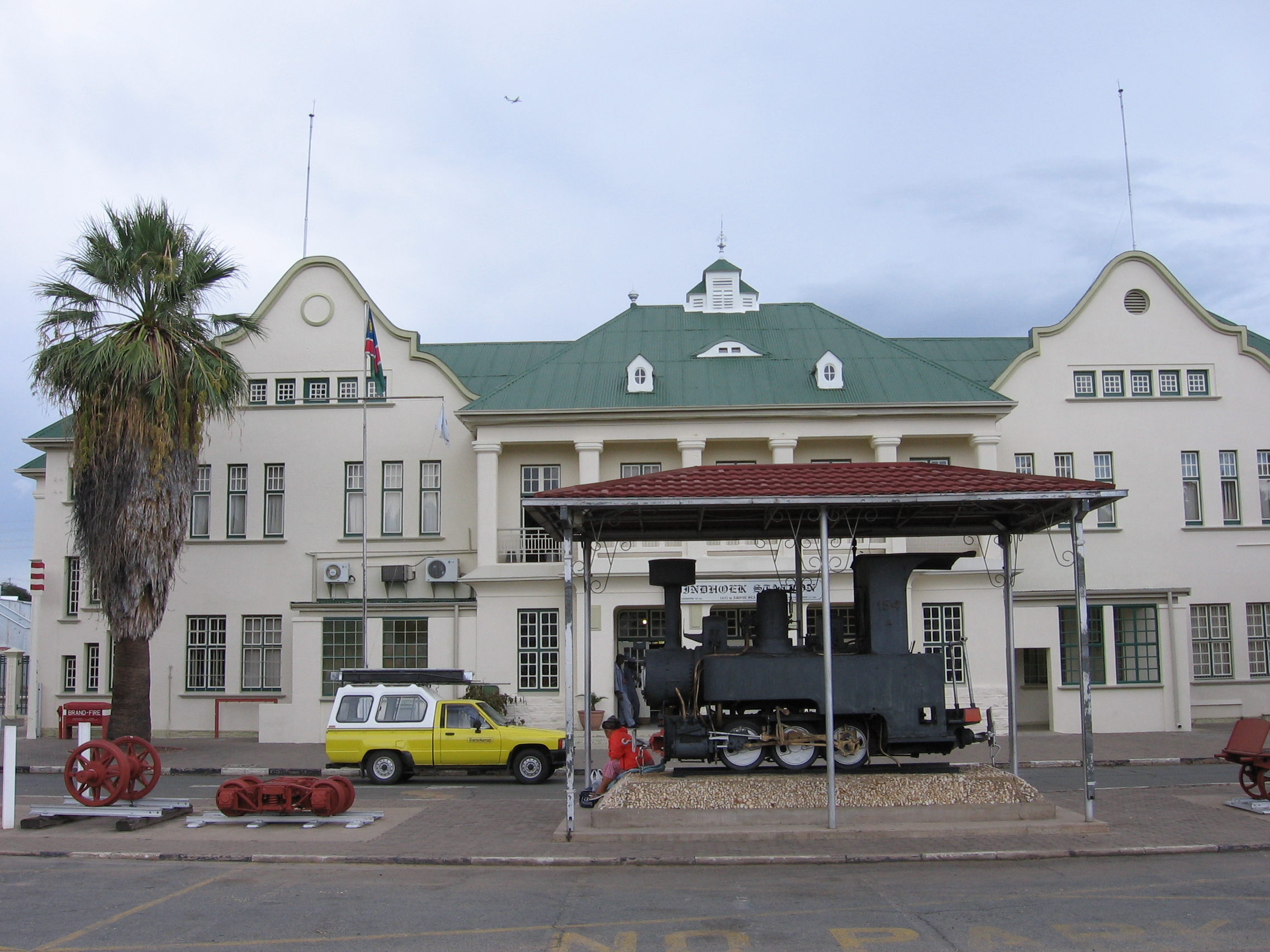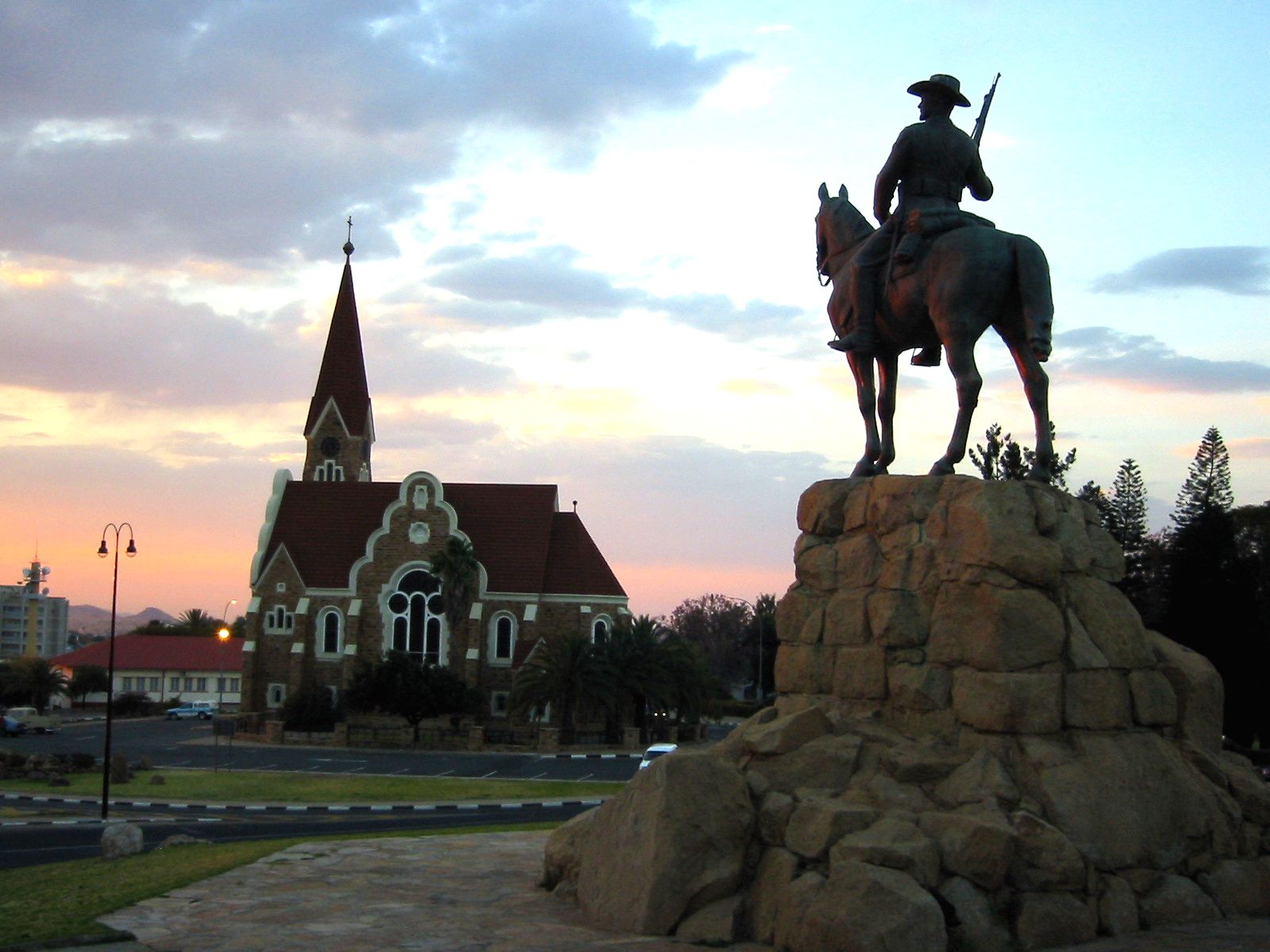Windhoek Africa’s windy city
At first glance there is nothing but the inhospitable landscape of crimson sand surrounding the scattering of low slung buildings. Look closer and Windhoek’s green acacia scrub and red roofs shimmer like an oasis along the spine of the Khomas Hochland.

Hiking trails in the Daan Viljoen Game Park, 25 kilometres away, offers an escape from city (Image: Jean-Louis Vandevivere, CC BY-SA 2.0, via Flikr)
Windhoek is the sedate centre of a vast wild and rugged country. Its coastline and sand dunes are widescreen glorious technicolour cinematic.

The C14 Windhoek to Walvis Highway (Image:whatleydude, CC BY-SA 2.0, via Flikr)
It’s streets, full of life, a testament to two decades of peace and prosperity honour revolutionaries that have influenced Namibian history (Nelson Mandela, Robert Mugabe and Fidel Castro) and its German past (Bach, Goethe and Bismarck). Werner List Street is where you will find the House of Gems with its history of Namibia’s extraordinary mineral wealth.
Namibia’s commercial and geographic heart bears the stamp of its colonial German past. A century after Germany gave up control of their south west African colony, it still holds fast to its language, food and architecture.
A visit to the Old Breweries Craft Market is the best place to shop for handmade Namibian crafts. Craftsmen from across Namibia bring their jewellery, leather goods, fabric or handmade shoes to sell to tourists and locals.
At the colonial era Bahnhof Street railway station you can climb aboard Namibia’s Desert Express.
Let this luxury tourist train rock you to sleep on the week-long trip from Windhoek through northern Namibia. Let the train do the work as you relax and watch the drama of the Namibian landscape pass by. The train chugs pass Namibia’s vast plains, towering sand dunes and soaring mountains.

The historic old railway station in Windhoek (Image: Wikimedia)
Spot wildlife from the comfort of your luxury cabin or the bar. Graceful giraffe at waterholes, unworried hyenas, herd of zebra and elephant pass by your window or amble up to the train that stops at the best vantage points.
There are two trip options on the Desert Express. A 350 km trip through Namibia’s central highlands to Swakopmund on the Atlantic coast or the longer safari option. Leave Windhoek and head to Walvis Bay and includes drives in Etosha.
Or eat up the empty arrow straight kilometres of tarmac in a 4X4. Leave Windhoek and head toward Etosha National Park. The Kalahari Basin is big game country, but the trip there is one of those classic experiences that is about glorious scenery and the freedom to stop, and go where you please.
Namibia is pure escapism, its landscape serene and its people friendly. If you don’t want to take on the gravel roads in the middle of nowhere that take you to boutique lodges, then stay in Windhoek.
Namibia is short on 5 star accommodation bit t is a country of 1000 star experiences. In Windhoek the romantic The Hotel Heinitzburg, built by a love struck German count for his fiance, is the place to stay.
The Lounge at These Hands sits above the city, at 2046m above sea level it is one of the highest points in the country. Have dinner or just enjoy sundowners and enjoy the spectacular sunset. Or just wait.
From any stoep in the city, cold beer in hand, wait for the fat orange moon-rise. A spectacular celestial show that only Africa can offer.

Windhoek’s Christuskirche of the German Evangelican-Lutheran Church (Image: Commons Wikimedia)


